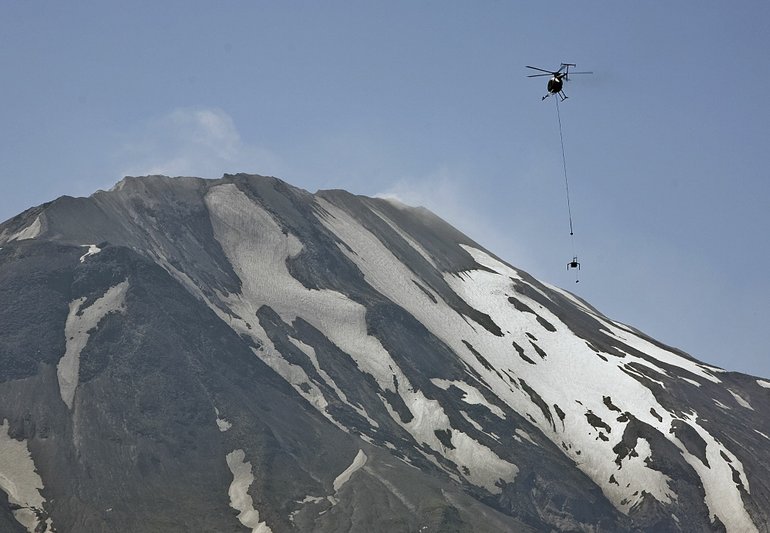In less than a week, four swarms of more than 120 earthquakes shook Mount St. Helens in late November. Scientists say they reveal the volcano is likely recharging.
Yes, each of these little earthquakes is a clue and a reminder we are marching toward an eruption someday. But nobody knows when.

Although these tremors were too small to be felt even by someone standing directly over their epicenters, scientists say they reveal the volcano is likely recharging.
“Each of these little earthquakes is a clue and a reminder we are marching toward an eruption someday,” said Weston Thelen, a U.S. Geological Survey seismologist with the Cascades Volcano Observatory in Vancouver.
However, “there’s nothing in this little modest seismicity, and none since 2008, that is a really good indicator of when that eruption will be.”
The earthquakes occurred between 1 and 2 miles below the surface and most registered at magnitudes of 0.3 or less; the largest was a magnitude 0.5. While the quakes are too small for human perception, scientists are able to study them thanks to sensitive seismometers stationed around the mountain.
As magma comes into the volcano’s system and is stored, scientists think that it releases gases and fluids that travel up into cracks, pressurizing and lubricating them, and causing small quakes.
“We know Mount St. Helens is slowly repressurizing. We can’t see it, but we think it’s inflating subtly,” said Liz Westby, a Cascades Volcano Observatory geologist.
Indeed, USGS scientists haven’t detected any anomalous gases or increases in ground inflation since the earthquake swarm.
“St. Helens is a well-behaved volcano, as far as we can tell,” Thelen said.
Similar seismic episodes occurred during recharge periods between 1986 and the 2004 eruption; the small earthquake clusters resumed shortly after the eruption ended in 2008 and have continued periodically. Most recently, swarm earthquakes were detected in March through May of this year.
Scientists don’t exactly know how the volcano’s plumbing is laid out, but the little earthquake clusters give them a slightly clearer picture of what’s happening beneath the surface. By measuring how the speed of the seismic waves change as they move through the earth, researchers can better understand rock densities and where magma chambers are.
“These quakes don’t happen very often; you have to really exploit the ones we do get,” Westby said. “(It) gives us a better understanding of what’s going on and tells us where we need to do more research.”











